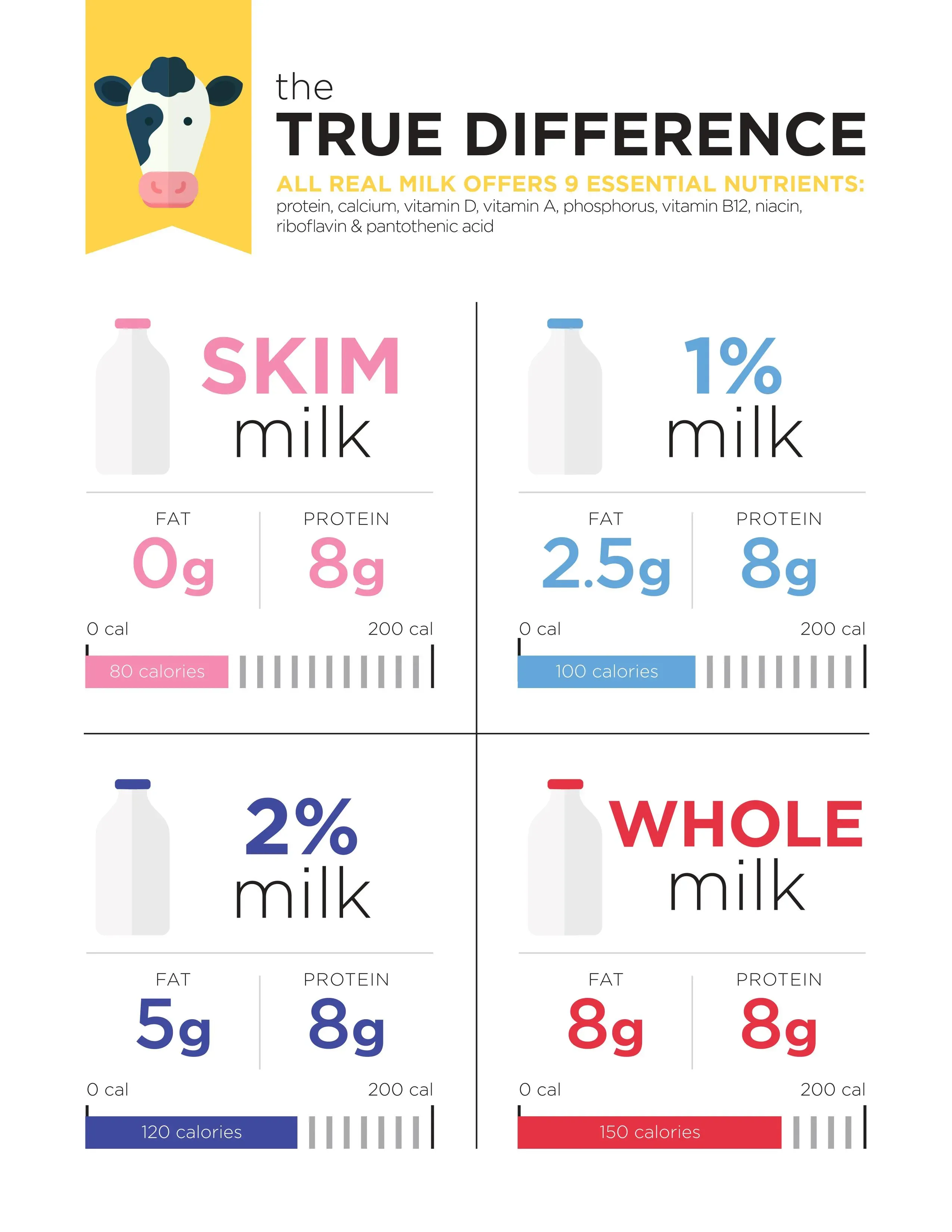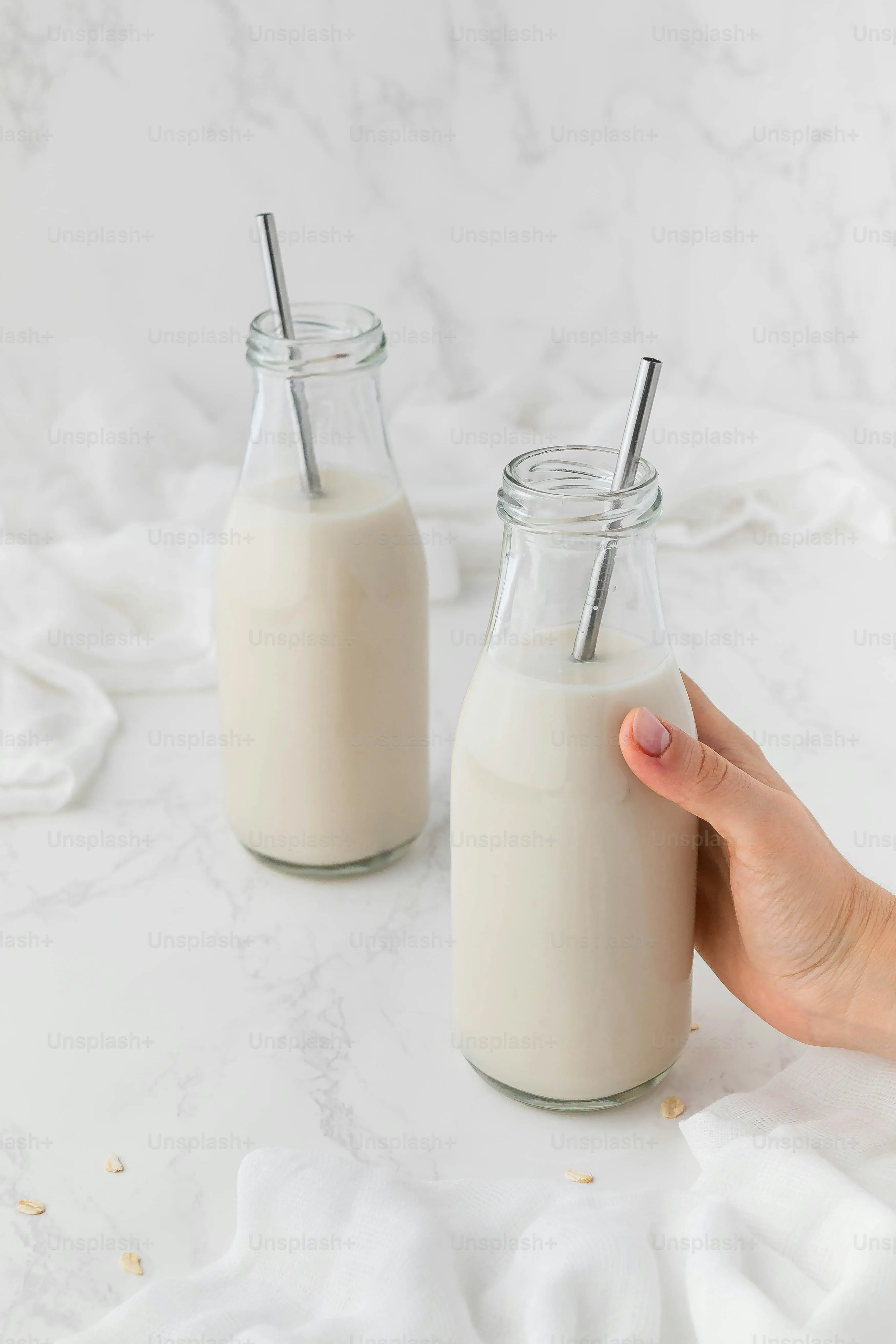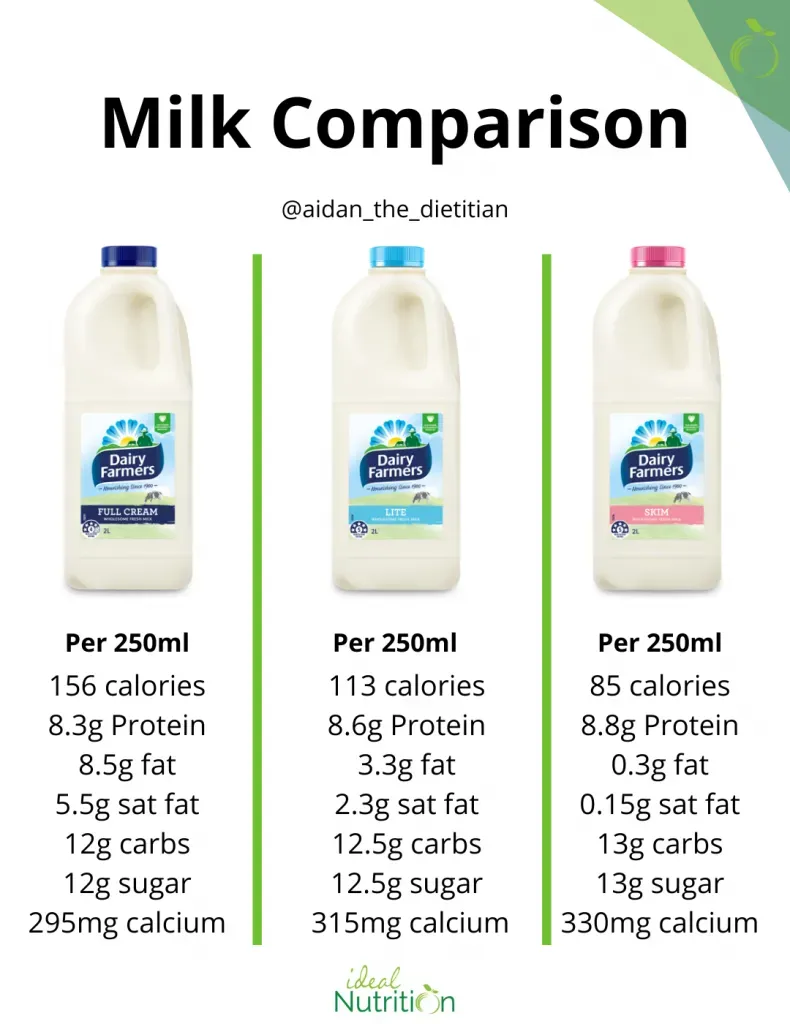Table of Contents
Walk down the dairy aisle these days and it feels less like grocery shopping and more like navigating a nutritional minefield. Whole milk, 2%, 1%, skim – the options seem endless, and everyone’s got an opinion. For years, we were told the golden rule: less fat equals healthier. So, switching to skim or low fat milk seemed like a no-brainer if you were watching your weight or your heart.
Low Fat Milk vs Full Fat Milk: Breaking Down the Nutrition Facts

Low Fat Milk vs Full Fat Milk: Breaking Down the Nutrition Facts
The Obvious Difference: Fat and Calories
Alright, let's get down to brass tacks. The most glaring difference when you line up cartons of low fat milk vs full fat milk is, well, the fat content. Whole milk, often labeled as 3.25% milkfat, packs the most punch in this department. It's called "whole" for a reason – they haven't skimmed much off the top. Move down the line to 2% (reduced fat), 1% (low fat), and finally skim (non-fat), and you see a steady decline in the amount of fat per serving.
This directly translates to calories. Fat is more calorie-dense than protein or carbohydrates. So, a cup of whole milk naturally has more calories than a cup of skim milk. It's simple math, really. If calorie count is your absolute top priority, less fat means fewer calories in that single glass.
Beyond Just the Number: What Kind of Fat?
It's not just about how *much* fat is in there; it's also about the *type*. Dairy fat is a complex mix, but a significant portion is saturated fat. Whole milk contains more saturated fat than its lower-fat counterparts. For decades, saturated fat was the dietary bogeyman, linked directly to heart disease. This fear was a primary driver behind the push towards low-fat and fat-free dairy options.
However, the scientific consensus on saturated fat has gotten a lot less black and white lately. The picture is far more nuanced than "saturated fat bad, unsaturated fat good." The food matrix, meaning everything else packaged with that fat (like protein, calcium, and vitamins in milk), seems to play a crucial role in how it affects our bodies. So, while low fat milk has less saturated fat, whether that automatically makes it "healthier" is the million-dollar question researchers are still wrestling with.
Milk Type (per 8 oz serving) | Approx. Calories | Total Fat (g) | Saturated Fat (g) |
|---|---|---|---|
Whole Milk (3.25%) | ~150 | ~8 | ~5 |
Reduced Fat (2%) | ~120 | ~5 | ~3 |
Low Fat (1%) | ~100 | ~2.5 | ~1.5 |
Skim (Non-Fat) | ~80 | ~0.2 | ~0.1 |
Micronutrients and Fat-Soluble Vitamins
Now, let's talk about the good stuff that isn't fat or calories. All types of milk are generally good sources of protein, calcium, vitamin D (often added), potassium, and B vitamins like riboflavin and B12. The processing to remove fat doesn't significantly alter the levels of these water-soluble nutrients or minerals.
Where things get interesting is with fat-soluble vitamins, specifically Vitamin A and Vitamin D (when naturally present, though most milk is fortified). Vitamin A is naturally found in the fat portion of milk. When fat is removed, so is some of the natural Vitamin A. Dairy producers typically add Vitamin A back into lower-fat milks, and Vitamin D is added to most milk types anyway. So, while whole milk naturally contains these, lower-fat versions are usually fortified to compensate, meaning you're likely getting similar levels regardless of the fat content, thanks to modern processing.
Beyond Calories: What Fat Content Means for Nutrients

Beyond Calories: What Fat Content Means for Nutrients
It's Not Just Fuel: Fat's Other Jobs
so we've established that low fat milk vs full fat milk is a calorie conversation, sure. But thinking of fat *only* as calories is like saying a car engine is just metal – it misses the whole point. Dietary fat does more than just provide energy. It's crucial for absorbing certain vitamins, it plays a role in hormone production, and frankly, it makes food taste good and feel satisfying. Stripping out the fat changes the entire package, not just the calorie count.
When you remove fat, you're altering the "food matrix" we talked about earlier. This matrix is how all the components in a food interact. In whole milk, the fat globules are part of this complex structure. When they're gone, the milk behaves differently in your gut, and how your body processes the other nutrients might change too. It’s a system, not just a list of ingredients.
"The idea that saturated fat from dairy is inherently bad is being challenged by newer research looking at the whole food, not just isolated nutrients."
Feeling Fuller: Fat and Satisfaction
Ever notice how a glass of skim milk can sometimes feel less satisfying than whole milk? That's not just in your head. Fat contributes significantly to satiety – the feeling of fullness after eating. When you drink whole milk, the fat helps slow down digestion, meaning you might feel satisfied for longer compared to drinking skim milk, which is essentially just protein, carbs, and water with vitamins.
This feeling of fullness is a big deal, especially if you're trying to manage your weight. If drinking low fat milk leaves you feeling hungry sooner, you might end up snacking more later, potentially negating the calorie savings from choosing the lower-fat option in the first place. It's a classic case of focusing on a single number (calories) and missing the bigger picture of how food actually affects your appetite and overall intake.
Absorbing the Good Stuff: Fat-Soluble Vitamins
Remember those fat-soluble vitamins like A and D? While they're often added back to lower-fat milk, your body still needs *some* fat present to absorb them efficiently. Think of it like needing the right key (fat) to unlock the door (your intestinal wall) for the vitamins to get in. While you don't need a ton of fat for this, having some naturally present in the milk, as in whole milk, can aid in the absorption of these crucial vitamins and any other fat-soluble compounds present.
So, even if the label says Vitamin D is added to skim milk, your body might absorb a bit less of it compared to having it in whole milk, unless you're consuming fat from another source at the same time. It adds another layer to the low fat milk vs full fat milk debate – are you just getting the nutrient *on paper*, or are you actually getting the benefit in your body?
The Great Debate: Low Fat Milk vs Full Fat Milk and Your Health

The Great Debate: Low Fat Milk vs Full Fat Milk and Your Health
Heart Health: Is Full Fat Dairy Really a Villain?
For decades, the dietary police hammered home one message: saturated fat clogs arteries, and full fat milk is loaded with it. Simple cause and effect, right? Swap to low fat milk vs full fat milk, slash the saturated fat, save your heart. It made sense on paper, and it fueled the low-fat craze that dominated grocery aisles for years. But here’s where the plot twist comes in: the evidence linking saturated fat from dairy specifically to heart problems isn't as strong as we once thought. Some large studies haven't found a clear link, and a few even suggest full-fat dairy might be associated with a *lower* risk of heart disease or stroke. It’s enough to make you wonder if we threw the full-fat baby out with the bathwater.
Why the flip-flop? Scientists are now looking at the 'food matrix' again. Maybe the calcium, protein, and other compounds in milk somehow modify how the saturated fat behaves in the body. Or perhaps people who consume full-fat dairy tend to have other dietary or lifestyle habits that influence their health outcomes. It's messy, and anyone who tells you the science is settled on dairy fat and heart disease is selling something.
Let's consider the common health concerns often brought up in the low fat milk vs full fat milk discussion:
- Heart Disease: Older advice pointed fingers at saturated fat in whole milk. Newer research is less certain, sometimes showing no link or even a potential benefit.
- Weight Management: Logic suggests fewer calories (low-fat) equals easier weight loss. However, satiety from full-fat milk might reduce overall calorie intake later.
- Type 2 Diabetes Risk: Some studies link full-fat dairy consumption to a *lower* risk of developing type 2 diabetes, contradicting the low-fat dogma.
- Metabolic Syndrome: Similar to diabetes, certain components in full-fat dairy might offer protection against this cluster of risk factors.
Weight Management: The Satiety Factor
let's talk about the battle of the bulge. Conventional wisdom dictates that if you want to lose weight, you cut calories. Since low fat milk has fewer calories than full fat milk, it seems like the obvious choice. And yes, if you simply swap a glass of whole milk for a glass of skim and change nothing else, you consume fewer calories. Elementary.
However, human behavior and appetite are rarely that simple. As we touched on earlier, fat is satisfying. Drinking whole milk might help you feel fuller for longer compared to skim. If that feeling of fullness prevents you from reaching for a sugary snack an hour later, did you really save calories by choosing the low-fat option? Or did the full fat milk subtly help you manage your appetite throughout the day? It's not a guaranteed outcome for everyone, but it's a mechanism that researchers are taking seriously when comparing low fat milk vs full fat milk in real-world diets.
Think about it like this: are you the type of person who drinks skim milk and immediately craves something else? Or does a glass of whole milk actually tide you over until your next meal? Your personal experience here might matter more than the calorie count on the carton.
"Focusing solely on the fat content of milk in isolation ignores the complex interplay of nutrients and how they affect our bodies and eating habits."
Chronic Disease Risk: Beyond the Obvious
Beyond heart disease and weight, research has explored the link between dairy fat and other chronic conditions, particularly type 2 diabetes and metabolic syndrome. This is another area where the findings often fly in the face of the old low-fat guidelines. Several studies have found that higher consumption of full-fat dairy is associated with a lower risk of developing type 2 diabetes. Lower, not higher. Confusing, right?
The exact reasons for this aren't completely clear, but theories include the possibility that certain fatty acids in milk, or perhaps the combined effect of fat, protein, and calcium, improve insulin sensitivity or affect gut bacteria in a beneficial way. It's a prime example of how nutrients within a complex food matrix can behave differently than when isolated. So, when you look at low fat milk vs full fat milk through the lens of chronic disease prevention, the simple "less fat is better" rule starts to crumble.
Making Your Pick: Who Should Choose Low Fat vs Full Fat Milk?

Making Your Pick: Who Should Choose Low Fat vs Full Fat Milk?
When Low Fat Milk Might Still Make Sense
after all this talk about full fat milk maybe not being the dietary demon we thought, you might be wondering if low fat milk still has a place. And the answer is, well, maybe. Look, if you are on a medically supervised diet where every single calorie gram is meticulously tracked and you absolutely need to minimize dietary fat intake for a specific health condition unrelated to general heart disease risk (like certain malabsorption issues), then the lower calorie count and minimal fat in skim or low fat milk might be the prescribed route. It provides protein, calcium, and those fortified vitamins without the extra fat load. It’s a tool, and like any tool, it's great for the right job. But let’s be honest, for most otherwise healthy people just trying to eat reasonably well, the rigid adherence to low-fat dairy was perhaps an oversimplification.
Why Full Fat Milk Deserves Another Look
So, who should lean towards full fat milk in the great low fat milk vs full fat milk debate? If you find that a glass of skim milk leaves you rummaging for snacks twenty minutes later, the satiety factor of full fat milk could be a game-changer for managing your appetite naturally. It might help you eat less overall throughout the day without feeling deprived. Plus, as we've seen, the fear surrounding its saturated fat content seems less justified based on newer research, especially concerning heart health and metabolic conditions. For kids, whose growing bodies need more fat and calories, whole milk is often the recommended choice unless there's a specific medical reason otherwise. It's about looking at the whole nutritional package and how it fits into your overall diet and lifestyle, not just isolating one macronutrient.
- Consider Your Goals: Are you strictly counting calories for a specific reason? Low-fat *might* offer a slight advantage there, but consider the satiety trade-off.
- Listen to Your Body: Does whole milk keep you feeling satisfied longer? This could help manage overall intake.
- Look at Your Overall Diet: Is your diet generally high in processed foods, sugar, and unhealthy fats? Swapping milk might not move the needle much. Is it balanced? Full-fat dairy might fit in nicely.
- Think Beyond Fat: Remember the potential links between full-fat dairy and reduced risk of type 2 diabetes and metabolic syndrome. It's not a guarantee, but it's worth considering.
Individual Needs Trump Dogma
Ultimately, the choice between low fat milk vs full fat milk isn't a universal commandment etched in stone. It depends on your individual health status, dietary needs, preferences, and how these different types of milk make *you* feel. Someone managing high cholesterol might still feel more comfortable with lower-fat options, and that's a valid personal choice, perhaps guided by a doctor. Someone else who struggles with constant hunger might find that the richness of whole milk helps them eat less overall. There's no one-size-fits-all answer, despite decades of being told there was. The best approach is usually to consider the evidence, understand the nuances, and make an informed decision that works best for *your* body and your life, rather than just blindly following outdated rules.
So, Which Milk Wins the Battle?
Alright, let's wrap this up. The whole low fat milk vs full fat milk debate isn't as simple as the old food pyramids made it out to be. While low-fat options still make sense for some folks, especially if you're strictly managing calorie intake or have specific health directives, the evidence against full-fat dairy isn't quite the slam dunk we once thought. Full-fat milk brings slightly different nutrients to the table and, for many, fits perfectly into a balanced diet without causing the health crises it was once blamed for. It really boils down to your overall eating pattern, your personal health status, and frankly, what you enjoy drinking. Don't let rigid dogma dictate your dairy decisions; look at the bigger picture and choose what works best for you.
